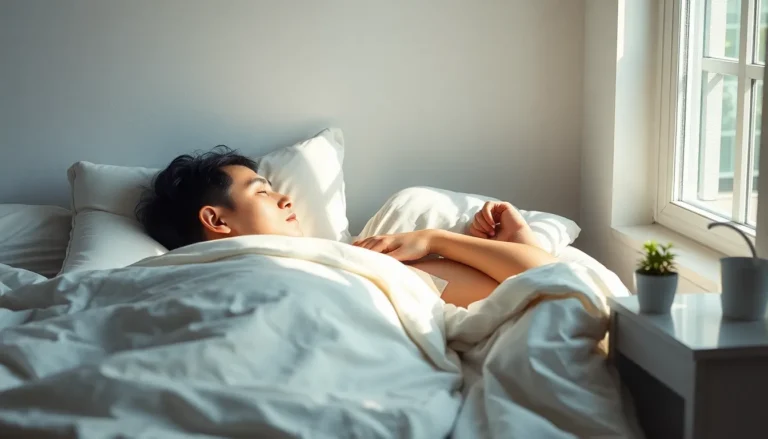Creating the perfect dark room setup isn’t just for the photography elite; it’s for anyone who wants to unleash their inner artist. Imagine transforming a simple space into a haven of creativity where light is your canvas and shadows play the role of your trusty sidekick. With the right tools and a sprinkle of imagination, anyone can master the art of the dark room.
Table of Contents
ToggleBenefits Of A Dark Room Setup
A dark room setup offers numerous advantages for both professionals and amateurs who wish to refine their craft. This environment fosters creative experimentation and enhances the overall artistic experience.
Improved Focus And Concentration
Creating a dark room minimizes distractions. It allows individuals to immerse themselves in their work, sharpening focus and engagement. In this environment, errors become less apparent, enabling thoughtful corrections. Concentration improves as ambient light gets eliminated, highlighting key details and essential tasks. Individuals often work more efficiently in the absence of distractions, leading to quicker project completions. Enhanced focus ultimately cultivates higher quality outcomes in artistic endeavors.
Enhanced Creativity
A dark room setup inspires artistic innovation. Shadows and highlights transform the creative process, stimulating new ideas. Without distractions, individuals can explore unconventional techniques and styles. This unique environment encourages experimentation with lighting and composition, prompting distinct artistic expressions. Many find that working in a dark room enhances problem-solving abilities, as they think outside the box. Overall, a dedicated space for creativity yields remarkable results and fosters artistic growth.
Essential Components Of A Dark Room Setup
Creating a functional dark room setup requires careful consideration of several essential components. Each element contributes to the effectiveness of the workspace.
Lighting Options
Lighting plays a critical role in a dark room. In choosing lights, opt for red or amber bulbs as they minimize interference with the photographic process. These colors preserve the integrity of sensitive materials during development. Flexible LED strip lights can provide adjustable illumination, allowing users to control brightness easily. Task lighting is also essential for detailed work, ensuring no harsh shadows disrupt the workflow. Incorporating dimmable options allows for additional versatility, accommodating different tasks and creating a comfortable atmosphere. Each lighting choice significantly influences the creative process.
Furniture Arrangement
Furniture arrangement impacts functionality and comfort in a dark room. Positioning the work table and processing equipment within easy reach optimizes workflow efficiency. Ergonomic chairs can enhance comfort, enabling longer working sessions without fatigue. Storage solutions like shelves and cabinets help organize materials, keeping the space uncluttered and accessible. Placing a drying rack near the work area streamlines the transition between tasks. Carefully organizing the arrangement encourages a fluid workflow, allowing artists to focus on their craft without distractions. Each element of the furniture setup can enhance the overall experience in the dark room.
Tips For Creating An Effective Dark Room Setup
Creating an effective dark room setup involves careful planning around sound and temperature. Implementing these elements enhances the overall experience and productivity.
Sound Control
Sound control plays a crucial role in maintaining focus. Use soundproofing materials like foam panels to absorb noise, ensuring a quieter environment. Soft furnishings like carpets or curtains also help to minimize sound reflections. A white noise machine can mask distracting sounds, allowing for uninterrupted concentration. Consider using headphones during work sessions to block out surrounding activities. This attention to auditory elements promotes a peaceful and immersive atmosphere.
Temperature Regulation
Temperature regulation affects comfort and concentration levels significantly. Maintain a steady temperature by installing an air conditioning unit or heater, depending on the season. Proper ventilation ensures fresh air circulation, preventing stuffiness. Using a fan can help in keeping the space cool during intense work sessions. Monitoring humidity levels with a hygrometer allows for adjustments that promote optimal working conditions. A consistent temperature enhances efficiency and contributes to a more productive dark room environment.
Common Mistakes To Avoid
Creating a dark room setup offers many benefits, but avoiding common mistakes enhances the overall experience. Two frequent pitfalls involve over-decorating the space and ignoring natural light.
Over-Decorating The Space
Over-decorating can clutter a dark room, creating visual distractions that hinder focus. Simplifying the decor allows for a clean workspace, enhancing creativity and productivity. A minimalist approach promotes a calm environment while still reflecting personal style. Fewer items lead to fewer distractions, which helps maintain concentration during artistic work. Maintaining a balanced aesthetic provides inspiration without overwhelming the senses.
Ignoring Natural Light
Ignoring natural light poses a significant challenge in a dark room setup. While controlling light is essential, some natural light can stimulate creativity and energy. Proper placement of windows improves ventilation and provides opportunities for daylight integration. Using blackout curtains or shades maintains control over ambient light during work sessions. Balancing artificial and natural sources creates an inspiring atmosphere, fostering a more dynamic creative process.
Creating a dark room setup opens up a world of artistic possibilities for everyone. By focusing on essential elements like lighting, furniture arrangement, and sound control, individuals can craft an environment that fosters creativity and concentration. The right balance of artificial and natural light enhances the overall experience, allowing for innovative experimentation and growth.
Adopting a minimalist approach helps maintain focus while avoiding distractions. With careful planning and attention to detail, anyone can transform a simple space into a dynamic creative haven. Embracing this journey not only elevates artistic expression but also leads to personal satisfaction and fulfillment in the creative process.




